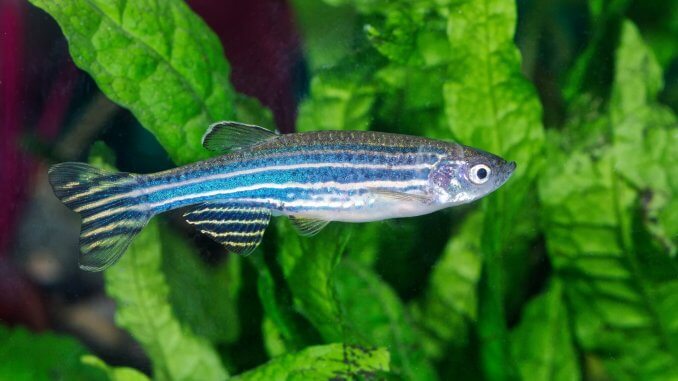
The zebra danio is a freshwater fish of the danio group, in the family Cyprinidae. Zebra danios have slim bodies with horizontal black and white zebra-like stripes.
The fish are popular amongst aquarists due to their social, peaceful nature, although they can be aggressive if housed in a crowded tank.
There are several color variations of the zebra danio, including a neon-colored, genetically modified variation known as the GloFish® danio.
TABLE OF CONTENTS
Zebra Danio Facts & Overview
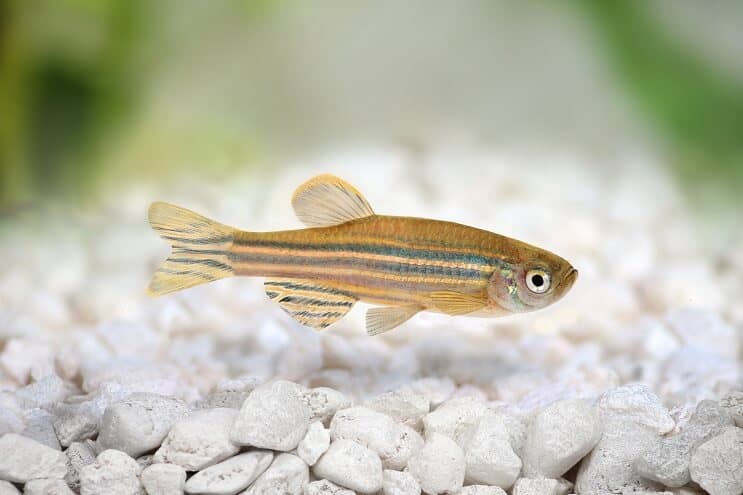
| Scientific name: | Danio rerio |
| Common names: | Easy |
| Distribution: | India, Bangladesh, Bhutan |
| Size: | 1.5–2.5 inches |
| Life expectancy: | 3–5 years |
| Color: | Various colors including blue, green, red, purple, orange; black and white stripes |
| Diet: | Omnivore |
| Temperament: | Peaceful, playful |
| Minimum tank size: | 10 gallons |
| Temperature: | 64–77°F (18–25°C) |
| pH: | 6.8–8.0 |
| Hardness: | 5–19 dGH |
| Care level: | Easy |
| Breeding: | Egg layer |
Origin
Zebra danios originate from tropical and subtropical waters in India, Bhutan, and Bangladesh. The zebra danio’s natural habitat differs with the seasons.
Water temperatures rise to 82°F in the summer, temperatures drop to around 60°F in the winter, depending on the exact region.
Zebra danios are commonly found in many different habitats, including slow-flowing streams and rivers, and flooded ponds and rice paddies. The fish have adapted to a range of water parameters and are used to varying levels of vegetation and light.
Adult Size & Lifespan
Fully-grown zebra danios reach a maximum length of 2.5 inches. Females and males are the same sizes, but females are wider than males in the abdominal region.
The life expectancy of zebra danios is between two and five years.
Availability
Zebra danios are available to buy across the US. GloFish danios, a genetically modified color morph of zebra danios, are more popular and widely available than common zebra danios.
Most zebra danios are captive-bred on fish farms, which reduces costs because the fish don’t need to be imported from another country.
The average cost of a zebra danio is $2. Zebra danios are schooling fish that should be kept in groups of at least five, bringing the total minimum cost up to $10.
You can find zebra danios available at the following online stores:
- LiveAquaria, which sells zebra longfin danios and GloFish zebra danios in various colors.
- The Wet Spot, which sells common zebra danios.
Appearance & Behavior
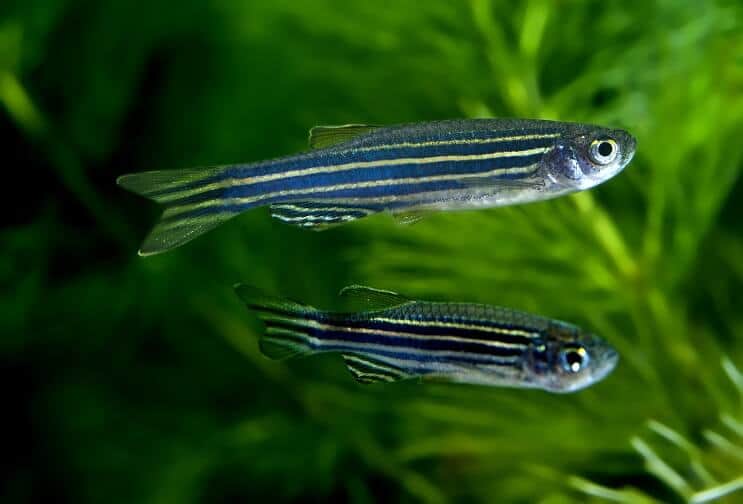
Zebra danios have narrow, torpedo-shaped bodies with distinct horizontal stripes from head to tail. When housed with compatible fish, zebra danios are active, peaceful, playful fish that don’t cause trouble.
Colors, Patterns, Fins, and Sex Differences
Zebra danios are small fish with thin bodies and zebra-like stripes. In the wild, the fish are silvery-gold in color with blue stripes. Males have a more golden color than females, which are silvery-white in comparison.
The common zebra danio has short, rounded fins and a rounded tail. The longfin zebra danio is a captive-bred aquarium fish and has long, flowing fins and a long tail, about three times the length of the common zebra danio’s fins and tail.
In the aquarium industry, zebra danios are found in a range of colors, with silvery-green, pink, blue, and purple bodies. All zebra danios have white stripes with black borders and different colored strips between these stripes — such as blue.
Neon versions of the zebra danio, called GloFish danios, are also available in several colors: Sunburst Orange, Galactic Purple, Starfire Red, Electric Green, and Cosmic Blue.
Albino zebra danios have white-gold bodies and red eyes. These fish are rare in the wild because their colors make them easy prey, but they’re relatively common in the fish trade.
Stressed zebra danios lose their coloration. When trying to impress their mates during the breeding season, male and female zebra danios have brighter, bolder stripes.
Typical Behavior
Zebra danios are active, playful fish that get on well with most fish in a community tank. The zebra danios swim quickly around the upper and middle sections of the tank, and are diurnal, meaning they’re more active in the day than at night.
As shoaling fish, zebra danios are bravest in groups of five or more. Getting the balance right is important — too few zebra danios can cause stress, while too many zebra danios can cause hyperactivity and territorial behavior.
Zebra danios have hierarchical systems of dominance within their shoals, established through play-fighting and non-aggressive chasing. Although the fish are peaceful, they’re known fin-nippers, especially when housed with slow-moving, long-finned fish.
Zebra Danio Care & Tank Requirements
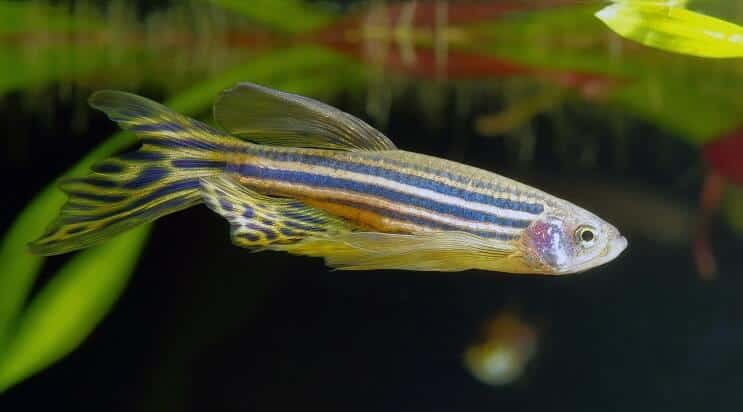
Caring for zebra danios is easy because they’ll eat almost anything. Replicate the danio’s wild habitat in captivity and feed them an omnivorous diet to ensure they are happy and healthy in the tank.
Habitat and Tank Requirements
In the wild, zebra danios live in slow-flowing freshwater lakes and streams in South Asia. This natural habitat is tropical, densely vegetated, and packed with smooth pebbles. Mimic the zebra danio’s habitat in captivity with suitable tank decorations and the right water parameters.
The minimum tank size for zebra danios is 10 gallons, plus an additional 2 gallons per extra fish. Zebra danios are energetic, active fish that enjoy plenty of open swimming space in the middle of the tank. The tank should be wider than it is high to accommodate the zebra danio’s swimming style.
The best substrate for zebra danios is a fine, soft substrate, such as treated sand, which replicates the sandy river beds in the zebra danio’s natural habitat. Thoroughly wash the sand before adding it to the tank to prevent cloudy water.
Plants like Java fern and Amazon sword help with oxygen circulation in a zebra danio tank. Zebra danios enjoy exploring and hiding in plants, and the diverse habitat provided by plants can reduce territorial behavior.
Add pieces of bogwood and rounded pebbles to the bottom of the tank to replicate the rocks and roots found in the zebra danio’s natural environment.
Tank Conditions
The ideal tank conditions for a zebra danio are:
| Water type: | Medium-hard, slow-flowing freshwater |
| Tank size: | Minimum 10 gallons, plus 2 gallons per extra fish |
| Water temperature: | 64–77°F |
| Substrate: | Soft, fine sand |
| Tank setup: | Plants, smooth rocks, caves |
| Acidity: | 6.8–8.0 pH |
| Water hardness: | 5–19 dGH |
| Filter: | Yes, to provide a current that replicates the slow-flowing waters in the zebra danio's habitat |
| Pump: | Yes, to provide oxygen and water movement |
| Bubbler: | Not necessary, but can supplement an air pump to further oxygenate the water |
| Lighting: | Yes, standard aquarium lighting is needed for plant growth and to mimic the day-to-night cycle. GloFish zebra danios require a blue light to show off the fish's neon colors |
| Water heater: | Yes, if the fish are housed in a location where ambient temperatures fall below 60°F |
Poor tank conditions can stress zebra danios and cause their color to fade. Maintaining optimum water parameters greatly reduces the risk of conflict and disease in the tank.
Disease
There are no diseases that specifically affect zebra danios. However, the fish are prone to several common freshwater diseases, including:
Ich
Ich is a parasitic skin disease caused by Ichthyophthirius multifiliis. Symptoms of ich include white spots on the fish’s body, lethargy, and flashing, where the fish rubs its body on rough surfaces.
If you notice signs of ich, quarantine the affected fish and increase the water temperature to 77°F to speed up the lifespan of the parasite.
Mycobacteriosis
Mycobacteriosis is a bacterial disease that affects fish that are stressed due to cramped tank conditions or poorly-maintained water parameters. Lethargy, skin inflammation, and ulceration are signs of mycobacteriosis. In a serious case, fin loss may occur.
Treat mycobacteriosis by quarantining the fish in another tank and carrying out daily water changes. Speak to your veterinarian about antibiotics to add to the water.
Tank Mates
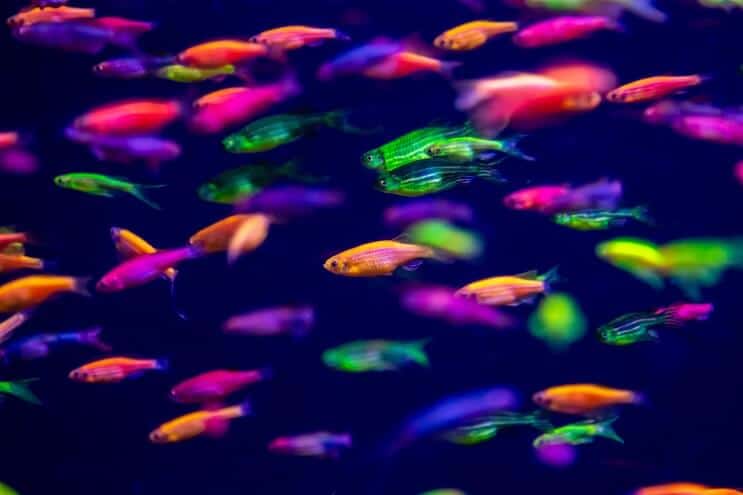
Zebra danios are compatible with lively, peaceful fish of a similar size. Don’t house zebra danios with slow-swimming, long-finned fish because zebra danios are fin-nippers. Avoid large, predatory tank mates because these fish view zebra danios as food.
Great tank mates for zebra danios include:
- Other zebra danios (buy at least five zebra danios before considering other fish species for the tank)
- Peaceful gouramis like honey gouramis
- Rosy barbs
- Scarlet badis
- Rummy nose tetras
- Ember tetras
Non-fish tank mates for zebra danios include:
- Blue velvet shrimp
- African dwarf frogs
- Zebra snails
Diet and Feeding
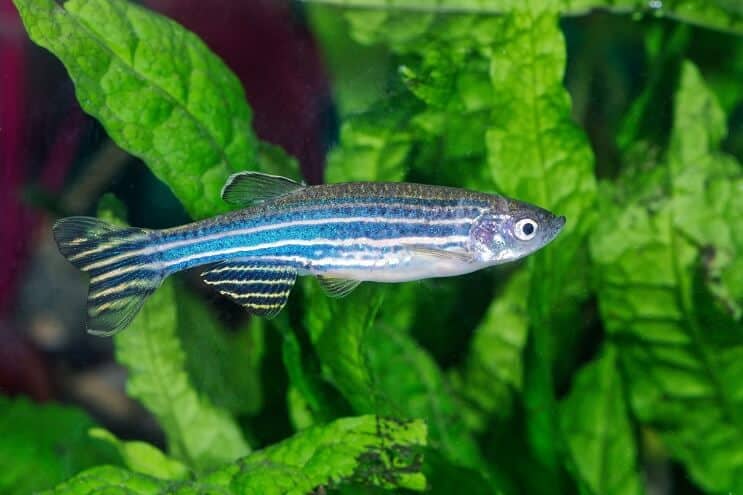
In the wild, zebra danios eat a combination of algae, worms, crustaceans, and mosquito larvae. Provide a similarly varied diet in captivity to ensure the fish obtain all the necessary essential nutrients from their food.
Feed zebra danios high-quality fish flakes, algae wafers, and greens like spinach and cucumber. Provide live or frozen foods like daphnia and bloodworms to zebra danios twice per week as a high-protein treat.
Split feeding into two sessions per day, providing enough food for the fish to eat within two minutes. Discard uneaten food to keep the tank clean.
Breeding
Zebra danios are easy, beginner-friendly fish to breed. The fish reach sexual maturity at three months old. Zebra danios are egg layers and lay hundreds of eggs at a time.
For the best chance of success, follow the steps below for breeding zebra danios:
- Choose a healthy adult male and female zebra danio. Keep the fish apart while you set up a separate 10-gallon breeding tank with a sponge filter and a sandy substrate, and establish a water temperature of 71–80°F.
- Condition the pair separately for breeding by feeding them high-quality live or frozen high-protein sources, like bloodworms. If this is too hard to do in a community tank, move the fish to the breeding tank before conditioning.
- When the female becomes rounder than usual, indicating the development of eggs, place the male and the female in the breeding tank.
- Within 24 hours, the fish should spawn, and the female will scatter up to 400 eggs on the substrate. Fertile eggs are translucent, while white, opaque eggs are infertile.
- Check that the male has fertilized the eggs. If so, return both adult fish back to their home tank to prevent the parents from eating the eggs.
- The fry will hatch within three days. Feed the fry crushed flakes that are small enough for the fish to eat. Keep the fry in a separate tank until they’re fully grown, within 12 weeks.
Should You Get a Zebra Danio for Your Aquarium?
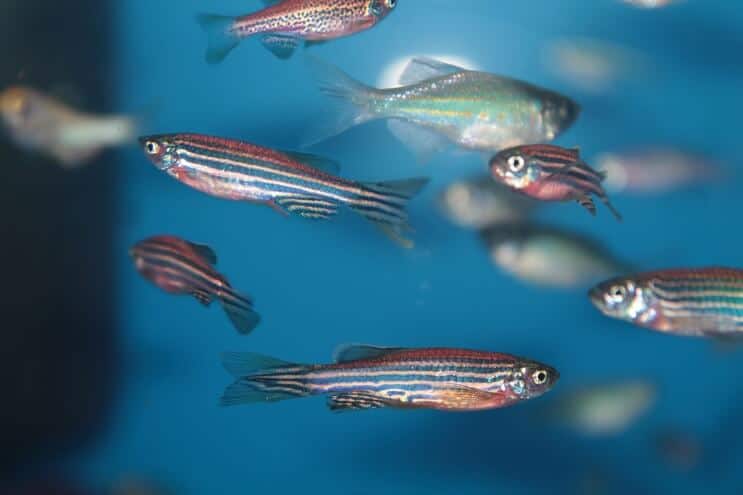
Zebra danios are lively, entertaining fish that add a pop of color to the tank.
You should get a zebra danio if you have enough space for a school of at least five energetic, playful fish, and your tank doesn’t contain long-finned or slow-moving fish. Don’t add zebra danios to a tank containing predatory fish or to small tanks that don’t provide adequate swimming space for the zebra danios.
Zebra danios are a fun addition to most aquariums thanks to the fish’s playful personality and array of colors.
Zebra Danio FAQs
- Can you keep just two zebra danios?
- How long can zebra danios go without food?
- How many zebra danios can I put in a 15-gallon tank?
- Do zebra danios need an air pump?
- Why are my zebra danios at the bottom of the tank?
- Can bettas live with zebra danios?
- What is the lifespan of a zebra danio?
- Can a zebra danio live alone?
- How do I know if my zebra danios are stressed?
- What fish can live with zebra danios?
- Are zebra danios aggressive?
- How many zebra danios should be kept together?

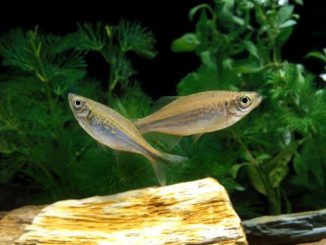
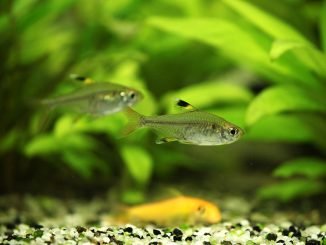
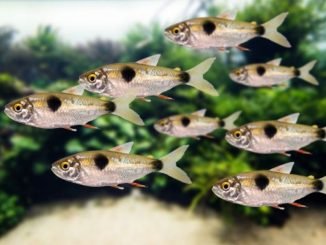
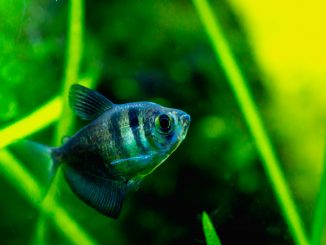
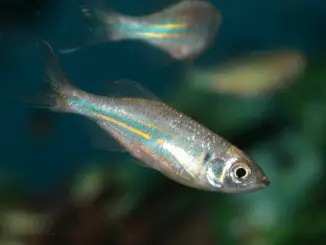
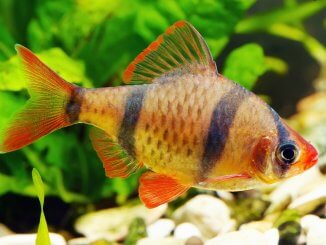
Zebra Danios are cool schooling fish – but they do get larger than 2 inches at adult size…I’ve got a small school of adults and most are just over 3 inches long…Yeah, I was surprised too. And while they are generally peaceful they aren’t shy about throwing their size around and will bully smaller fish for food.
i got two batches of zebra danios and they multiplied rapidly, but unfortunately disease eradicate the breeders and fry, maybe its the water, i used a large clump of water plants as spawning areas.
I have a question about sudden aggression in these fish. I had five in a heavily planted tank, I think one female with four males, based on size and coloration of the fish. Today while doing a water change and trimming over growing plants, the smaller fish suddenly began attacking the larger female. I tried to separate the fish as best I could, but they were downright vicious in chasing and nipping at it as a group. Within minutesthe fish was dead and the remaining Daniel calmed back to their usual behavior. They didn’t chase any other fish in the tank. I had never seen this before. Do you think the water change and trimming triggered some sort of territorial or mating frenzy?